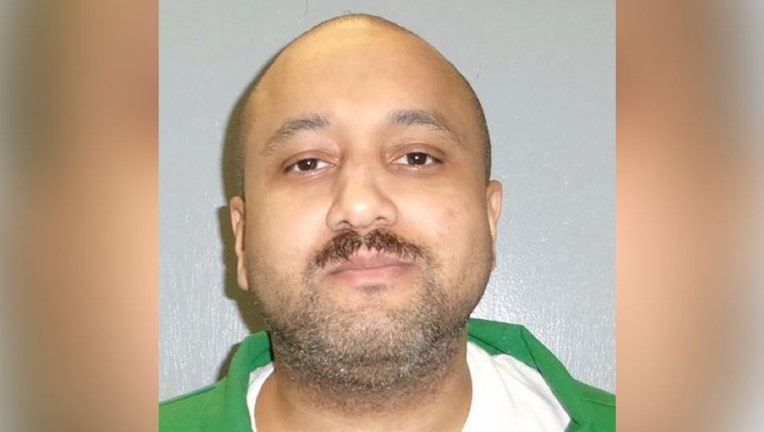Lawyers for man executed by firing squad in South Carolina say bullets mostly missed his heart

Mikal Mahdi is set to be executed on Friday, April 11. (Photo courtesy of the South Carolina Department of Corrections)
Lawyers for a man who was executed by firing squad in South Carolina said the bullets mostly missed his heart.
Mikal Mahdi’s lawyers argued that because of this, Mahdi suffered extreme pain for as long as a minute during his execution.
A botched execution
Dig deeper:
An autopsy photo of Mahdi’s torso showed only two distinct wounds at the April 11 execution, according to the pathologist’s report, which was filed Thursday with a letter to the state Supreme Court.
His lawyers called it a botched execution because they think either the volunteer prison employees, who all had live ammunition, missed, or the target was not placed properly.
A pathologist hired by attorneys for condemned inmates said there isn't enough independent evidence from the autopsy — where only one photo of the body was taken and Mahdi's clothes weren't examined — to make that conclusion.
What they're saying:
"The shooters missed the intended target area and the evidence indicates that he was struck by only two bullets, not the prescribed three. Consequently, the nature of the internal injuries from the gunshot wounds resulted in a more prolonged death process," Dr. Jonathan Arden said.
What happened?
The backstory:
Mahdi chose to be executed by firing squad over lethal injection or electrocution in the killing of an off-duty police officer in 2004.
All three guns fired simultaneously and prison officials believe all three bullets hit Mahdi with two of them entering his body at the same spot and following the same path, Corrections Department spokeswoman Chrysti Shane said. That has happened before when the firing squad team practices its job to fire at the inmate from 15 feet (4.6 meters) away.
Arden said that likely meant Mahdi took 30 to 60 seconds to lose consciousness — two to four times longer than the 15 seconds that experts, including Arden and those hired by the state, predicted for a properly conducted firing squad execution.
During that time Mahdi would have suffered excruciating pain as his lungs tried to expand and move into a broken sternum and ribs, as well as from "air hunger" as the damaged lungs struggled and failed to bring in needed oxygen, Arden said.
What they're saying:
Witnesses to the execution heard Mahdi cry out as the shots were fired, groan again some 45 seconds later, and let out one last low moan just before he appeared to draw his final breath at 75 seconds.
"I noticed where the target was placed on Mikal’s torso, and I remember thinking to myself, ‘I’m certainly not an expert in human anatomy, but it appears to me that target looks low,’" said David Weiss, an attorney for Mahdi who was also a witness at his death.
Mahdi’s autopsy didn’t include X-rays
The official autopsy did not include X-rays to allow the results to be independently verified; only one photo was taken of Mahdi’s body, and no close-ups of the wounds; and his clothing was not examined to determine where the target was placed and how it aligned with the damage the bullets caused to his shirt, Arden said in a report summarizing his findings.
Without X-rays or other internal scans to follow the path of the bullets through Mahdi’s body, no additional light could be shed on the two-bullets-through-one-hole claim, Arden continued.
Mahdi's body was cremated, preventing a second autopsy.
Why was Mahdi executed?
Mahdi, 42, was executed after admitting he killed Orangeburg Public Safety officer James Myers in 2004, shooting him at least eight times before burning his body. Myers’ wife found him in the couple’s Calhoun County shed, which had been the backdrop to their wedding 15 months earlier.
The Source: Information for this article was gathered from The Associated Press and previous reporting by FOX Local. This story was reported from Los Angeles.

